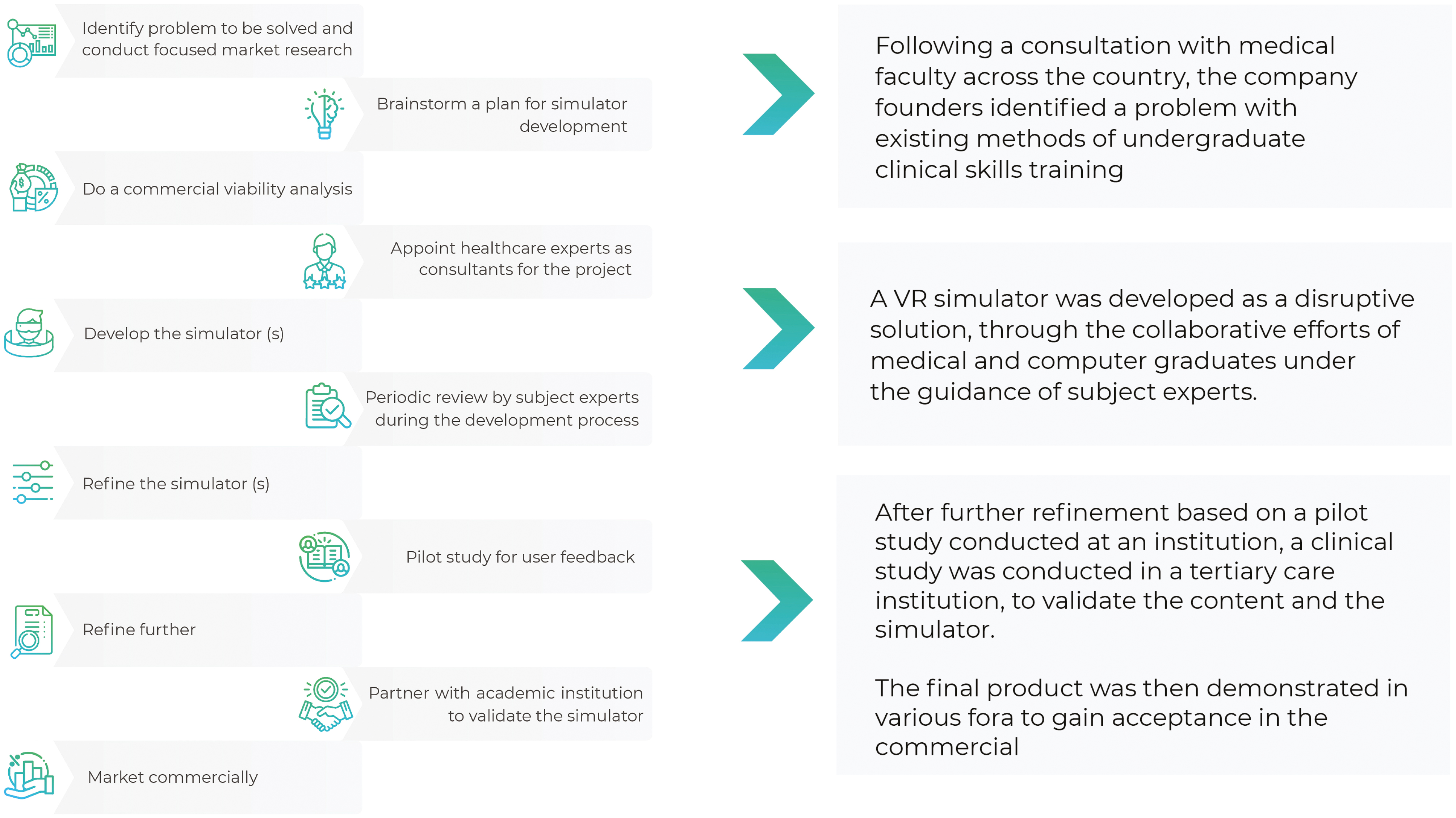
Simulator manufacturing is advancing rapidly, especially in incorporating newer technologies for better user experience. The advent of augmented/virtual/mixed reality has been a catalyst for these advances. Manufacturers need to obtain input from healthcare professionals with the appropriate qualifications and experience to develop simulators to promote learning. A blended academic-commercial approach best serves these ends. One approach is outlined in Pai et al. [1]. One framework for biomedical innovation has been developed by Schwartz et al. [2] informing its Biodesign Fellowship course. The key components of this process are ‘Identify, Invent and Implement’ [1]. Traditionally simulator developers have not performed a detailed needs analysis or need screening before simulator development. A technically good product may result that does not translate to funding or sales. Thus, a systematic approach is called for simulator development to increase the chances of market acceptance. One possible approach is suggested in Figure 1. This approach has been successfully adopted to develop and sell virtual reality (VR) task trainers. We believe that rather than rushing to fill a perceived vacuum, this structured approach starting with a needs analysis is much more likely to meet with commercial success, even though it may mean a greater lead time in simulator development.


Flow chart suggesting the process of simulator development.
1.
2.